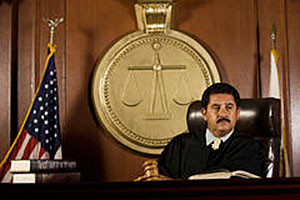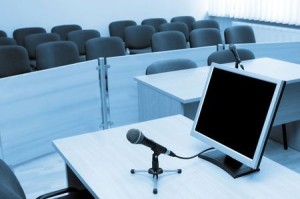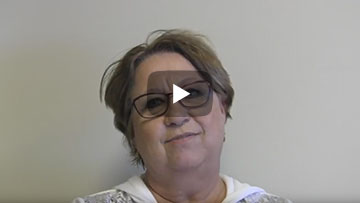
After your car accident lawsuit has been filed, there may be a period of months or, in some cases years before the trial date. Your Kansas City car accident attorney should use this time to get information about the other driver’s defenses, get evidence, more clearly focus the issues in your case, in some cases mediate or try to settle the case, to get your case ready for trial and for other purposes. Conferences with the court, filing and deciding of motions, disclosures and discovery are some of the steps which can happen during this part of your case.
Some of the court conferences which may occur in your case are:
What is a Scheduling Conference?
The scheduling conference is usually the first significant opportunity for us to familiarize the judge with your case. Scheduling conferences are usually set early in the case, typically at some time after the other driver, and possibly others have received your lawsuit and filed what lawyers often call an “answer”, a written response to the claims made in your lawsuit. That being said, judges have a lot of control over how cases in their court are handled so the timing and conduct of scheduling conferences can vary significantly from court to court. Even different judges in the same courthouse may have their own ways to handle these conferences and other aspects of litigation.
The scheduling conference is about setting a timeline for your case, dates and deadlines. While procedures vary from court to court, there is often a fairly predictable set of issues that an experienced car accident attorney can expect that the judge will probably want to talk about. The judge usually will ask the lawyers to provide basic information about the case and probably ask for recommendations concerning appropriate deadlines for various steps in the litigation process.
One of the lawyers may be ordered to prepare a court order called a “scheduling order” setting out in writing all the dates which have been set.
Discovery Conference
 When your lawsuit has been filed court rules typically provide tools to request, and in some cases force the other side to provide information, documents and other things which can lead to evidence that can be used at the trial of your case. This process is called discovery. In discovery we can ask the other driver and their insurance company to provide information which helps prove your case. Obviously, because providing this information can go against their own best interests, the other driver and their insurer may try to avoid providing this kind of information. Attempts to avoid providing information can create problems which lawyers and judges often call “discovery disputes”.
When your lawsuit has been filed court rules typically provide tools to request, and in some cases force the other side to provide information, documents and other things which can lead to evidence that can be used at the trial of your case. This process is called discovery. In discovery we can ask the other driver and their insurance company to provide information which helps prove your case. Obviously, because providing this information can go against their own best interests, the other driver and their insurer may try to avoid providing this kind of information. Attempts to avoid providing information can create problems which lawyers and judges often call “discovery disputes”.
Discovery is a recurring source of problems and delay in litigation. To try to reduce these problems, your judge may schedule a discovery conference to monitor progress of discovery, resolve any discovery disputes and other discovery issues which may have come up.
What is a Pretrial Conference?
The pretrial conference is usually held after the scheduling conference and any discovery conferences. Timing of your pretrial conference varies from court to court, and it may be held a number of months before your trial or much closer.
One of the purposes of the pretrial conference is to focus and define the issues at the trial. Despite having investigated the case before filing a lawsuit, when the suit was initially filed, each side may not have had all the information about your crash, why it happened, the damages you sustained because of it and other things.
Part of the purpose of discovery is to provide both us and the defense lawyers a way to obtain information so we can fill in the blanks and have a more complete picture of the case. In discovery lots of information should be exchanged. By the time of the pretrial conference it is anticipated that the lawyers will have had an opportunity to review the information they have obtained in discovery and have developed a more complete understanding of the facts of your case and the legal rules which apply.
The judge will probably also want to know each side’s version of the facts and law which apply in the case. In the trial of your car accident case this might generally include your version of how your wreck occurred, things the other driver did wrong, why the other driver is liable, among other things. The judge will probably want to know the driver’s defenses as well. The judge may also want detailed information about the damages you are claiming.
 One of the goals at the pretrial conference typically is to narrow and spell out the issues in the case so the trial can be most tightly focused on the issues that are actually disputed and need to be decided. If the parties can agree on certain issues, generally, evidence on them does not need to be submitted and the court and jury’s time does not need to be taken up with things that are not in dispute.
One of the goals at the pretrial conference typically is to narrow and spell out the issues in the case so the trial can be most tightly focused on the issues that are actually disputed and need to be decided. If the parties can agree on certain issues, generally, evidence on them does not need to be submitted and the court and jury’s time does not need to be taken up with things that are not in dispute.
As an example, take a case where you were rear-ended by an 18 wheeler. Through the course of discovery, the insurance company and their defense attorney may have concluded that the other driver was, in fact, negligent and they are not likely to succeed in convincing a jury that the other driver should not be held liable. In that case, at the pretrial conference the defense attorney could indicate that they were admitting liability for the crash. The judge could find that liability was admitted and the trial would focus only on the issues which are disputed, like the amount of damages to be awarded. The savings in court, jury and lawyer time and expenses by not having to produce proof of things which are not really in dispute is obvious.
Procedures vary among courts and even among individual judges in a particular court. So while this description of the procedures in a pretrial conference covers many typical things that judges often want to have addressed at a pre-trial conference, it is only an example. In your case your judge may or may not want to discuss these things and may want to address other items not listed here.
Once the pretrial conference is completed a pretrial order is usually prepared. It will typically include things addressed at the pretrial conference and narrow, define and limit the issues at the trial.
What is a Motion?
At its most basic, a motion is a formal request to the court to do or not do something. Motions are most often made in writing. However some motions may be made orally. Motions made during a trial or hearing are an example of this.
Court rules and judge’s rulings control the procedure for motions. The process usually starts with a person (called the movant) filing or making the motion. If the motion is in writing, court rules usually require that the other party be provided a copy of the motion and have a chance to respond to it before the court rules on the question. In some courts, the other party has a set number of days to submit a written response to the motion. In other courts the motion may be set for a hearing for the parties will appear in court and argue the motion. These are two common ways that written motions are handled in the American legal system. Depending on the specifics of the case, rules of procedure and the specific jurisdiction and individual judges, preferences there may be other methods.
Oral motions are often made at a trial or hearing to address issues which arise during a trial or hearing. These are often handled when they arise without the opportunity to submit written responses.
While the kinds of requests that can be the subject of a motion are very broad, certain types of motions are seen repeatedly in litigation arising from car accidents. Some of those motions include motions to dismiss, motions for summary judgment, motions to compel, motions to exclude experts, and motions in limine. These motions are explained in detail below.
Motion to Dismiss
As its name suggests, a motion to dismiss asks the court to dismiss a case. There are a number of grounds for requesting dismissal through a motion to dismiss. For example, on many claims, the law provides a period of time within which you must file a lawsuit. This is often called a statute of limitations. If you don’t file suit within this time period your claim can go away. One application of a motion to dismiss is to seek the dismissal of a case filed after the statute of limitations has expired.
Another situation where a motion to dismiss might be filed is if the law does not provide a remedy in the circumstances. The law does not provide a remedy for every wrong. So if someone filed a lawsuit asking for something that the law simply does not provide, filing a motion to dismiss may be the correct response.
Motion for Summary Judgment
There are cases in which the facts are not disputed and the only issues to be decided are purely legal questions. This is exactly the type of situation the motion for summary judgment was designed for. By resolving the case through the summary judgment procedure the case is resolved more quickly and the time and expense involved in having a trial are avoided.
If all of the evidence in the case as a whole, or certain parts of the case, points in one direction, then a party may file a motion for summary judgment, asking the court to enter judgment in the whole case or only on certain issues in the case. To request this they file a detailed Motion for Summary Judgment and supporting memorandum specifying the facts which are not in dispute, together with references in the court record, where proof of these facts is found. To support entering the judgment they have requested they also provide citations to court cases and laws which support what they are asking the court to do. They are then required to file the motion with the court and serve copies of the motion on the party against which they are seeking judgment.
The other party must review the motion for summary judgment and see if the facts are truly not in dispute. If the party disputes the claims they must cite the facts which are in dispute with references to evidence of the disputed facts in the record. They may also supply their own statements showing why there is enough dispute about the facts that summary judgment is not appropriate. They may also supply their own case and statute citations and legal arguments.
Once the motions and responses have been submitted to the court, the court will typically review them for a period of time and then issue a ruling.
What Does a Motion to Compel Mean?
A motion to to compel is a request to the court to order a party to do something. Within discovery it usually is a request to the court to order the other side to produce information being sought in discovery.
Discovery is the part of litigation process where each side can request information from the other side. In discovery, we may ask the other driver and their insurance company for information we think may be helpful to your case. You might expect that the driver’s and insurance company defense lawyers may not be eager to provide this information. The discovery process lets them object to providing information, which they often do. There are specific circumstances in which these objections are proper and other ones in which they are not.
If the defense lawyers object to providing information that was properly requested, the typical practice, depending on local procedure, is to have a telephone call with them or write them a letter addressing the issues. If the lawyers cannot resolve the issues between themselves then a “discovery dispute” exists. In some courts, the next step is to have a telephone conference with the judge to attempt to resolve the problem.
Some courts do not require the additional step of a telephone conference. In these courts, and in courts where the telephone conference with the judge was not successful in resolving the discovery dispute, the next step typically is to file a motion to compel. This is a formal request for the court to order the other side to provide the information being sought. Copies of the discovery which is in dispute and copies of the parties responses to them are typically submitted with the motion. After the motion to compel is filed, the party resisting the discovery will usually have an opportunity to respond in writing or orally.
After they have filed a written response, the response deadline has passed or they have appeared before the judge and orally addressed the motion, the judge will usually make a ruling. The judge may sustain the motion and order the other party to provide the information requested, deny the motion, in which case the party resisting the discovery is not required to provide the information or deny parts of what is been requested and order the other party to provide parts of the information which has been requested.
Motion to Exclude Experts
 Your car accident case can involve issues that require specialized knowledge and expertise. For example, if your income earning ability was reduced by the injuries sustained in your crash, a vocational expert may be needed to prove the extent of your losses. An economist may be needed to fully evaluate the total amount of damages. The list goes on.
Your car accident case can involve issues that require specialized knowledge and expertise. For example, if your income earning ability was reduced by the injuries sustained in your crash, a vocational expert may be needed to prove the extent of your losses. An economist may be needed to fully evaluate the total amount of damages. The list goes on.
Proof on issues that involve this specialized expertise and knowledge is often admitted into evidence by expert witness testimony. In the past there have been some issues with the quality and reliability of this testimony. To address these problems, in 1993 the United States Supreme Court decided the landmark Daubert v. Merrell Dow Pharmaceuticals, Inc. case. The Daubert decision applies directly in cases in federal courts. Depending on state law and court decisions, it may also have application in state court cases.
The Daubert decision puts the trial judge in the position of deciding whether expert testimony is admissible at your trial. Some factors the judge is supposed to consider in deciding whether to admit the testimony include whether the methodology has been or can be tested, whether it is generally accepted, the known or potential error rate and whether it is been subjected to peer review and publication.
Since the Daubert decision, such motions to exclude expert testimony have become common. Based on the factors listed in Daubert and others, these motions attack the relevance and reliability of expert testimony and ask the trial judge to order that it not be offered or admitted into evidence during the trial. If the judge in federal court finds that the testimony does not meet the Daubert requirements it can be excluded from evidence.
Motion in Limine
The goal of a motion in limine is to prevent the use of evidence or reference to evidence during a trial or hearing. From television and movies you may be familiar with the situations where the lawyer energetically jumps up and says Objection Your Honor! Irrelevant! or something similar.When evidence objections are handled in that way jurors may have heard enough to know that there may be something there and one side doesn’t want them to find out about it. They may draw a negative conclusions from this.
A motion in limine lets the lawyer who wants to keep the information out of evidence to challenge the admissibility of the evidence with the judge prior to its presentation in the courtroom before the jury. The judge will generally rule on the motion and admissibility of the evidence ahead of time. If the motion in limine is sustained, the evidence is excluded avoiding problems with jurors drawing conclusions from evidence that was objected to and excluded. If the motion is overruled, the evidence can be admitted.




